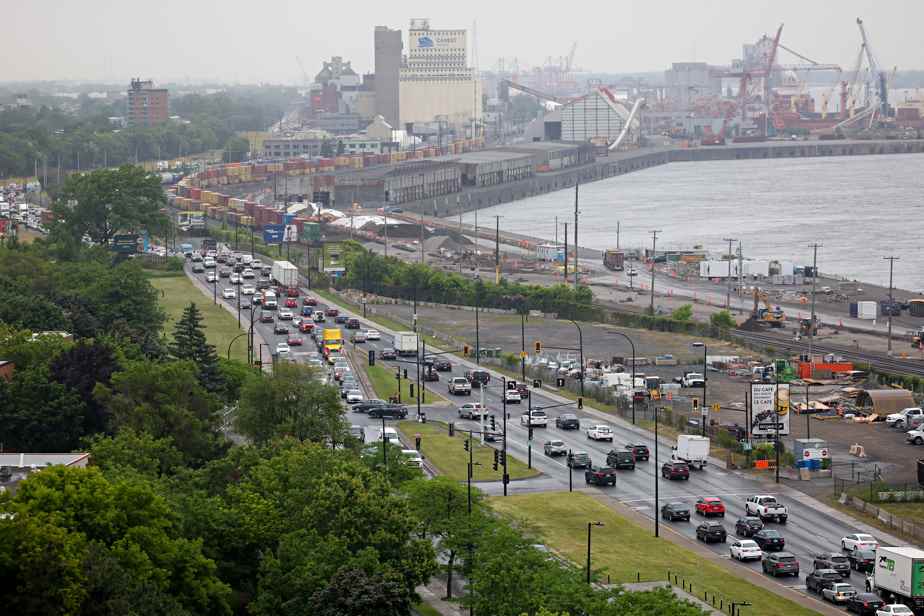The Minister for the Metropolis, Chantal Rouleau, persists and signs. Public transit in Montreal’s east end will be based on an automated light rail system, even if its relevance was based from the outset on a business model and governance contrary to the public interest.
Posted at 10:00 a.m.
What’s more, the abandonment of the downtown segment would be compensated by the deployment of two Lanaudière branches, although no serious study justifies this adjustment, which has all the appearances of yet another political interference in the matter of public transport in the metropolitan area. An interference coupled, moreover, with a thinly veiled threat formulated against the leaders of the Regional Metropolitan Transport Authority regarding the future of the organization.

PHOTO PATRICK SANFAÇON, LA PRESSE ARCHIVES
Chantal Rouleau, Minister responsible for the Metropolis and the Montreal region
During this time, the reflection on the future of the East of Montreal is carried out in dispersed order, according to the projects sketched out by each other in the shadow of an idyllic vision: to make the East of Montreal a Green Silicon Valley (sic). But on what is this vision supported, among others, by the former mayor of Montreal Denis Coderre, Prime Minister François Legault and the mayor of Montreal East, Anne St-Laurent? Obviously, essentially on the availability of vast sites released by the erosion of refining and on the supposed structuring effects of public transport.
But isn’t this way of looking at the future of Montreal’s east end a bit narrow? If the east end of Montreal offers such great business opportunities—vast land at relatively low prices given the constraints related to contamination—how is it that we are only discovering this Eldorado today? And why have high-tech companies moved elsewhere for two or three decades, including where it has often cost more to do so? Could it be that other constraints weigh down the future of this territory?
Neighborhood effects
It is worth remembering that the east end of Montreal is affected by the spillover effects of the activities of the Port of Montreal and the vast manufacturing industrial zones and parks, in particular with regard to service by trucking, whether finds one of the largest concentrations of heat islands in the metropolitan region, the only quarry still in operation − and for a few more decades −, the agglomeration’s purification plant and the only substation on the 735 kV line in the island.
However, this presence is not the effect of chance. It is the consequence of a historical distribution of activities linked in part to geography and in part to decisions of the past, for example that of devoting the territory of Montreal East to the reception of oil companies or to create industrial zones and parks extremely “profitable” from the point of view of municipal taxation, but characterized by neighborhood effects that are difficult to mitigate.
The territory is not a slate that just needs to be wiped off to renew its content. Rather, it is a palimpsest whose more or less deep layers affect the surface layers to varying degrees, including those that we intend to inscribe there.
This observation obviously does not confine itself to inaction or the perpetuation of the past. This is evidenced, among others, by the Anjou-sur-le-Lac district, a high-quality residential neighborhood wedged between desperately banal industrial and commercial sectors. If such a change in the evolution of the territory was possible, it is certainly possible to have ambition. But, should we act as if the east of the island were an area open to all possibilities?
What eastern Montreal urgently needs is a critical reflection on its future rather than a concept slapped arbitrarily on the sole grounds of the availability of land and the supposed structuring effects of a transport infrastructure, moreover just as arbitrarily imposed.
However, this reflection is slow and risks, consequently, to be subordinated to the multiplication of initiatives of all kinds, including with regard to public transport.
This urban thinking is all the more essential as the resulting development options should guide the choice of public transport routes and modes on which the leverage effect will depend, ultimately, the way in which we will be able to judiciously integrate the challenges of urban planning and mobility. It is about the relevance and the real possibility of basing the next urban plan of Montreal on an urbanism-mobility articulation. The stubbornness of the Legault government is here contrary to the public interest. Unless the electoral dimension of the public transport file in the east end of Montreal takes precedence over the current and future needs of the population.

